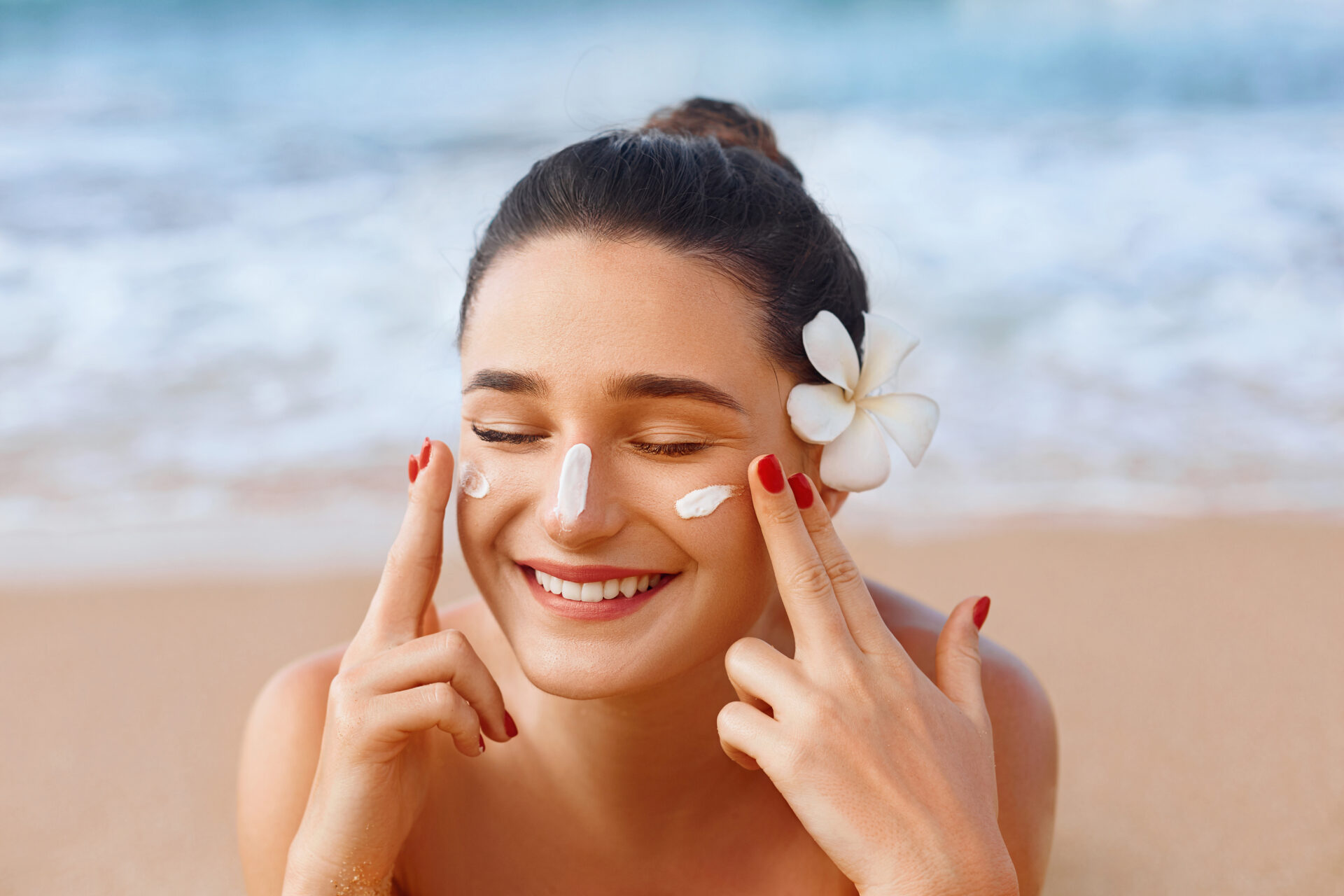Summer is finally upon us, and sunscreens are a hot topic. But how safe and effective is it actually to use sunscreen?
You might wonder why a gynaecologist who is not a dermatologist writes about this hot topic. Well – a few years ago I had to deal with skin cancer myself. Luckily it was caught in time and I am perfectly fine now. Thinking back though, it was most likely due to events that happened years ago when sunscreen was not all that popular, known or talked about. I am sure my many trips across Canada, the US and Europe on my motorbike without sunscreen had a lot to do with it.
Facts:
- UV rays: Ultraviolet radiation comes, among other things, from the Sun. There are many types of rays from the sun, both visible and invisible.
- The invisible rays consist partly of warm infrared radiation and partly of UV radiation, which cannot be seen or felt.
- The UV radiation from the Sun consists of UV-A, UV-B and UV-C rays. The three types of UV radiation have different wavelengths.
- The ozone layer ensures that the most dangerous UV-C radiation does not reach the surface of the Earth.
- The UV-B rays cause sunburn, but the UV-A rays also colour the skin. The UV-A rays can destroy the skin’s DNA and cause ageing of the skin.
However, some sunscreens on the market may contain substances that are suspected of being hormone-disrupting and allergy-causing.
The overall research which includes: “Use Sunscreen” shows first of all that it is important to know that the sun’s UV rays – not sunscreen – are the main reason why people develop skin cancer. That’s according to a comprehensive review of all research done by the WHO’s International Agency on Cancer (IARC)
UV rays penetrate the skin cells and damage the DNA. After many years of damage to the DNA, the cells can develop into cancer cells and divide inappropriately and uncontrollably. IARC’s review is used by skin cancer researchers worldwide as a reference and background for recommendations. Have limited amounts of sun rays and protect oneself with clothing, a hat and sunscreen when the UV index is high – for example in the middle of the day and especially in high summer.
When the skin is sufficiently lubricated, the sunscreen’s filters protect the skin against both UV-A and UV-B. A summary of the research from WHO says that UV filters actually work, they slow down a certain percentage of UV rays from hitting the skin cells. The higher the blocking factor, the more the filters in the cream block the UV rays.
At a factor of 15, some of the rays will still escape past the filters, and therefore many with light skin will still experience the possibility of being burned despite using sunscreen. The lighter the skin, the more vulnerable you are, as people with light skin have less of the skin’s natural protective agent, melanin (pigment). That does not mean that people with darker skin can’t burn. They do and need protection too.
Having said that, there are actually substances in some sunscreens that can have a different and negative effects on the body. Some sunscreens contain UV filters that are suspected of being hormone disruptors. These are chemical UV filters that can affect the natural hormone balance, among other things by having an effect like estrogen – the female sex hormone. The chemicals may make men less fertile and make girls go through puberty earlier than otherwise. There is also the possibility that the substances have an unknown harmful effect when several are present in the body at the same time- the cocktail effect, it is called. Much more research is needed about hormone disrupters.
So please wear sunscreens! Any sunscreen is better than no sunscreen. If available look for sunscreens with natural rather than chemical UV filters. Check the ingredients. Look for sunscreens with mineral-based UV filters like titanium or zinc-based UV filters.


